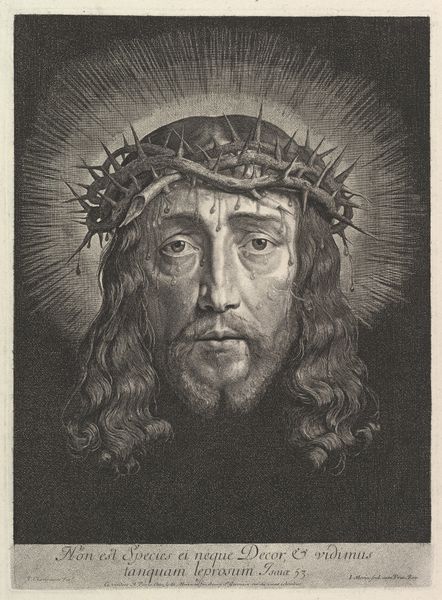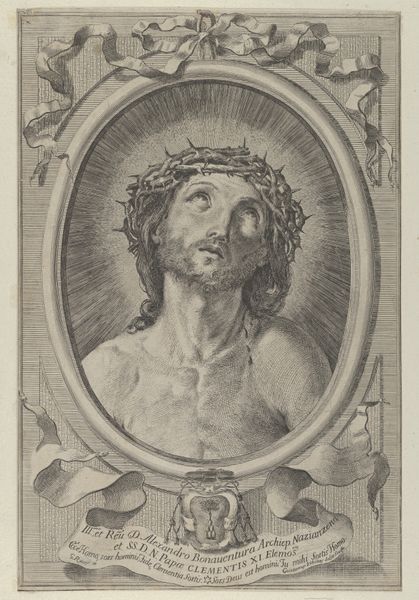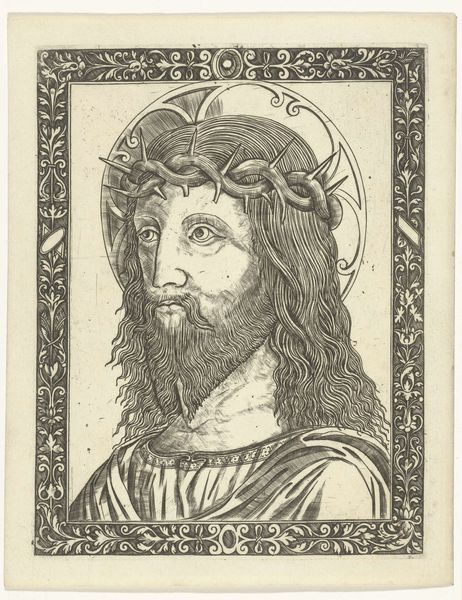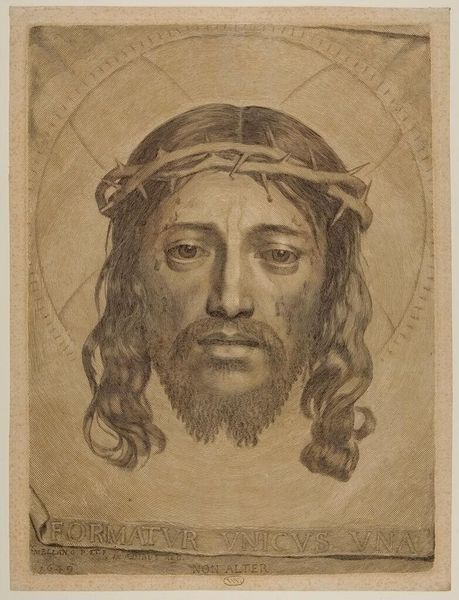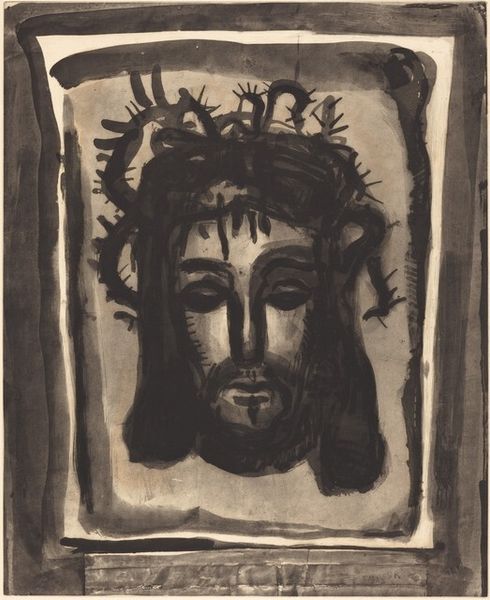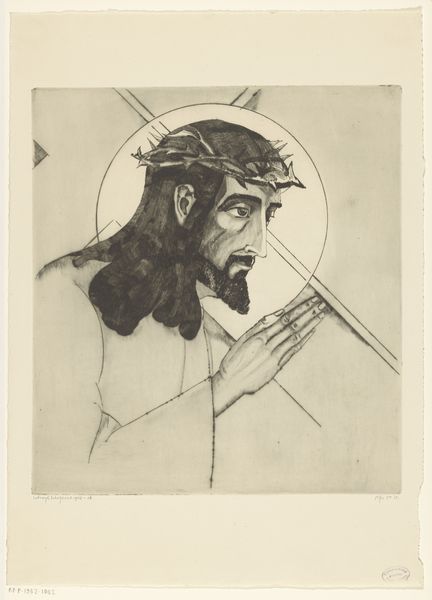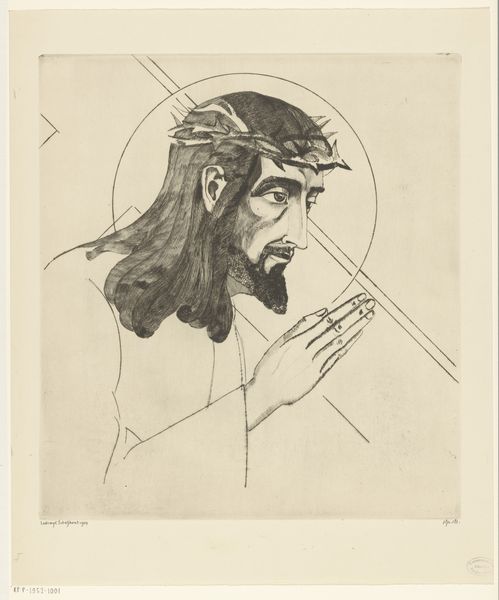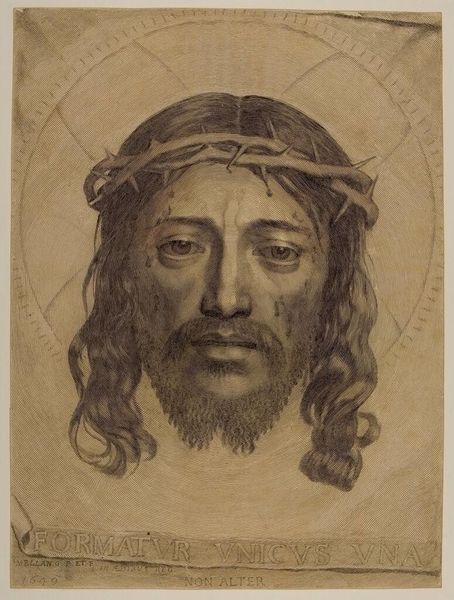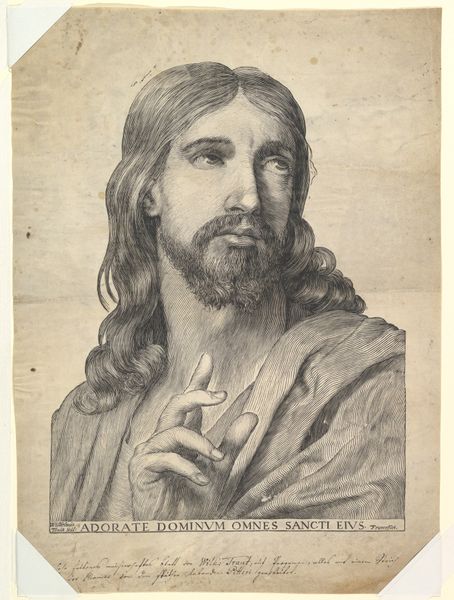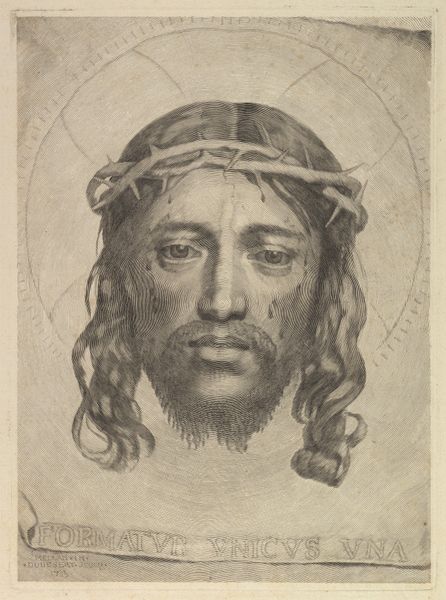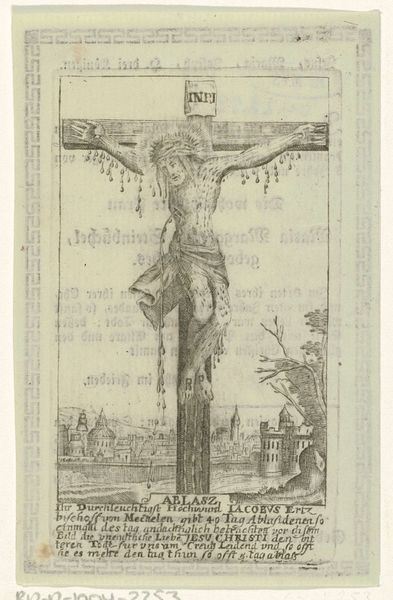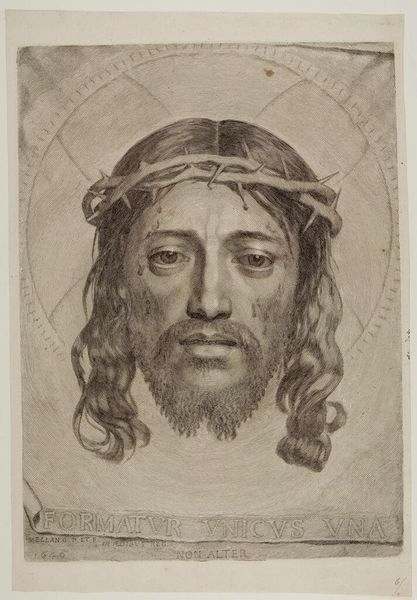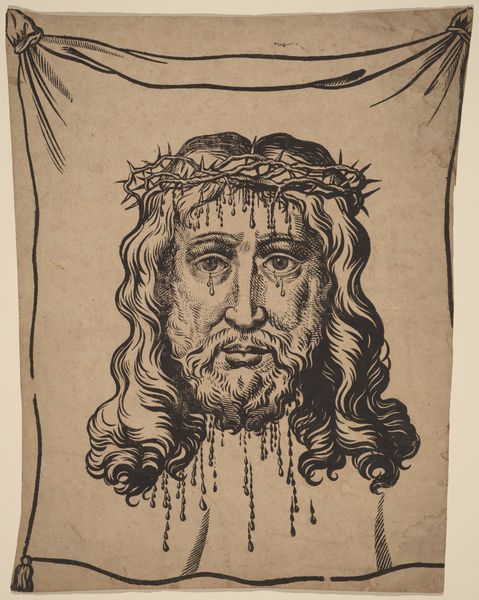
print, engraving
# print
#
history-painting
#
academic-art
#
engraving
Dimensions: height 365 mm, width 258 mm
Copyright: Rijks Museum: Open Domain
Curator: This engraving, entitled "Zweetdoek van Veronica," dating back to 1879 and attributed to Dominicus Kersten, commands attention with its detailed portrayal of Christ. Editor: The immediate impression is one of profound sorrow and suffering. The artist captured an overwhelming feeling of agony. The composition, with the focus entirely on the head and shoulders, really intensifies that. Curator: Note how Kersten utilizes engraving techniques. Observe the stark contrast created by fine lines that compose this image. Also notice how the strategic play of light and shadow enhances the textures of Christ’s hair, beard, and especially the crown of thorns. Semiotic structure, very present in the medium. Editor: This work resonates powerfully within the context of Catholic imagery and its public consumption. The 'Zweetdoek' refers to Veronica's veil, believed to have captured Christ's image. Consider how accessible such images made the suffering of Christ to mass audiences through publications such as this one in "Katholiek Illustratie" which this print seems to front. Curator: Precisely! Furthermore, the integration of Latin script, "Popule meus, quid feci tibi?" lends layers. Meaning "My people, what have I done to you?", is also integral. Notice the calculated choice of fonts, with all their variations and forms; all acting as cultural signifiers Editor: Indeed. The work functions as a piece of public devotion, distributed widely. The use of printmaking allowed for wider availability of this sort of imagery, bringing religious narrative to an audience through familiar mediums. Curator: Examining the formal aspects alongside its historical positioning allows for deeper analysis. How do the inherent technical choices enhance symbolic meaning and the viewer's emotional response? It opens layers. Editor: Seeing this artwork, especially placed in this newspaper context makes us think about faith as a visual and very accessible commodity of the period. Curator: Yes, precisely, as does the print technique used here which amplifies the work, giving way to new readings, now.
Comments
No comments
Be the first to comment and join the conversation on the ultimate creative platform.
